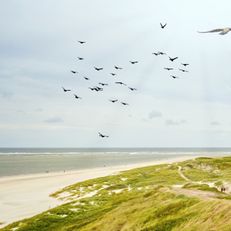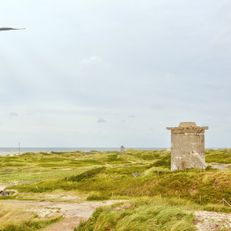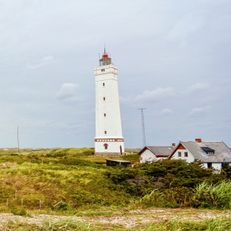Vignette Poland
In Poland, tolls are collected via the eTOLL system as well as at toll booths. There is no adhesive vignette. Instead, passenger cars require an e-ticket for certain tolled motorway sections, while other stretches still operate with manual payment at toll stations. Charges are based on the distance travelled and the vehicle category, and are set by the respective motorway operators. The former viaTOLL system was replaced by eTOLL in 2021, and the viaBOX has not been valid since then.
Toll Motorway
In Poland, generally, all vehicles are subject to tolls. Different rules apply depending on the type of road. The road network is divided into:
- Publicly funded roads (A2 Konin - Stryków and A4 Bielany Wrocławskie - Sośnica; expressways and highways) subject to tolls only for vehicles over 3.5 t since July 2023
- Concession highways: Privately funded highways (A1, A2 Świecko - Konin, and A4 Katowice - Kraków)
Exceptions
The toll-free motorways include:
- A6
- A8
- A18
In addition, no tolls are charged on any of Poland’s expressways.
Map
You can find a map of the toll road network in Poland here.
Regulations for Cars, Motorcycles, Trailers and Campervans
The determination of tolls for your vehicle varies based on the highway operator, the type of your vehicle, and its weight. Publicly funded roads have different regulations compared to concessions highways.
Publicly funded roads
There is a distinction for publicly funded roads between heavy and light vehicles. Light vehicles (vehicles or combinations with a permissible total weight ≤ 3.5 tonnes):
| Vehicle category | Details |
|---|---|
| Cars | • Passenger car • Passenger car with trailer (vehicle combination ≤ 3.5 tonnes) |
| Motorcycles | • Motorcycles • Motor scooters • Three-wheelers |
| Trailers | • Delivery van • Delivery van with trailer (Vehicle combination ≤ 3.5 tonnes) |
| Buses | • Minibus with 9 or fewer seats (including the driver) • Minibus with 9 or fewer seats (including the driver) with a trailer (vehicle combination ≤ 3.5 tonnes) |
Heavy vehicles (vehicles or vehicle combinations with a permissible total weight > 3.5 tonnes):
| Vehicle category | Details |
|---|---|
| Cars | • Passenger car with trailer with a permissible total weight > 3.5 tonnes and ≤ 12 tonnes |
| Buses | • Minibuses with fewer than 9 seats with a trailer and a permissible total weight of the vehicle combination > 3.5 tonnes and ≤ 12 tonnes • Tour buses/Buses with more than 9 seats (including the driver), regardless of permissible total weight • Tour buses/Buses with more than 9 seats (including the driver) with a trailer, regardless of permissible total weight |
| Articulated lorry | • Articulated lorry with trailer and a permissible total weight > 3.5 tonnes and ≤ 12 tonnes • Tractor unit without a semi-trailer with a permissible total weight > 3.5 tonnes and ≤ 12 tonnes • Articulated lorry with trailer and a permissible total weight > 12 tonnes |
| Lories | • Lorry with a permissible total weight > 3.5 tonnes and ≤ 12 tonnes • Lorry with a permissible total weight > 12 tonnes • Lorry with a permissible total weight > 12 tonnes with a drawbar trailer |
Concession motorways
Poland’s concession motorways operate with two toll systems: the closed system and the open system. In the closed system, the toll is based on the distance travelled and the vehicle category. In the open system, a fixed fee is charged regardless of the distance driven. However, there is no standardised rate that applies to all concession motorways.
Payment
Manual payment
At all concession highways, toll fees can be paid in cash or with a credit or debit card (Maestro or V Pay) at toll booths. Euros are accepted only in banknotes, and change is given in the Polish currency, Zloty.
Electronic payment
Publicly financed routes:
Since June 2021, toll fees for publicly financed routes are paid electronically through the e-Toll system. The e-Toll system provides you with an e-ticket and GPS-based payment options:
e-ticket
Available through the e-TOLL PL BILET app or on-site at machines, gas stations, and service stations.
• Up to 60 days in advance
• Required data: Vehicle registration number, route section, date and duration
• Valid for 48 hours from the time of purchase
GPS devices
The registration is done through e-TOLL
• On-Board Unit (OBU)
• External Locating Device (ZSL)
Concession motorways
You can also pay the fee for the A1 and A4 online:
“vintrica” app
• Access to the A1
• Automatic billing
“AmberGO” app
• Responsible for the A1
• Automatic payment system
“A4GO” app
• Responsible for the A4 Kraków – Katowice
• On-Board Unit possible
• kartA4 possible (rechargeable card)
Prices
Light vehicles
The prices are divided into toll rates and vehicle categories. Here, you pay per kilometre driven.
Typically, Category 1 (motorcycles) has a toll rate of £ 0.086 / km. The toll rate for Category 2 (cars with or without trailers under 3.5 tonnes) is £ 0.017 / km.
Heavy vehicles
The toll rate for heavy vehicles depends on the permissible total weight and the emission class. It ranges from £ 0.15 to £ 0.55. Here you can find more detailed information about the toll rate for heavy vehicles.
Fines
In Poland, those who violate toll obligations may face a fine ranging from 500 PLN (approx. £ 98,1916) to 1,500 PLN (approx. £ 295,07). Failure to pay the fine in even higher penalties. If you have purchased an e-ticket, be mindful of its 48-Hour validity period; otherwise, you may also face fines. Additionally, a fine is imposed if there is no registration in the e-TOLL system.
If you genuinely forgot your registration, authorities may prevent you from continuing your journey until the registration and activation are successfully completed.
Can you return a purchased e-ticket?
Yes. Returning the e-ticket is possible if the specified travel date is in the future. It is not possible to return the e-ticket retrospectively. Also, note that when returning the e-ticket, you must provide a reference number, which can be found on the e-ticket.
Toll obligations in neighbouring countries
The following neighbouring countries of Poland also have toll obligations to finance and maintain their highways:





 Czech Republic
Czech Republic Slovakia
Slovakia